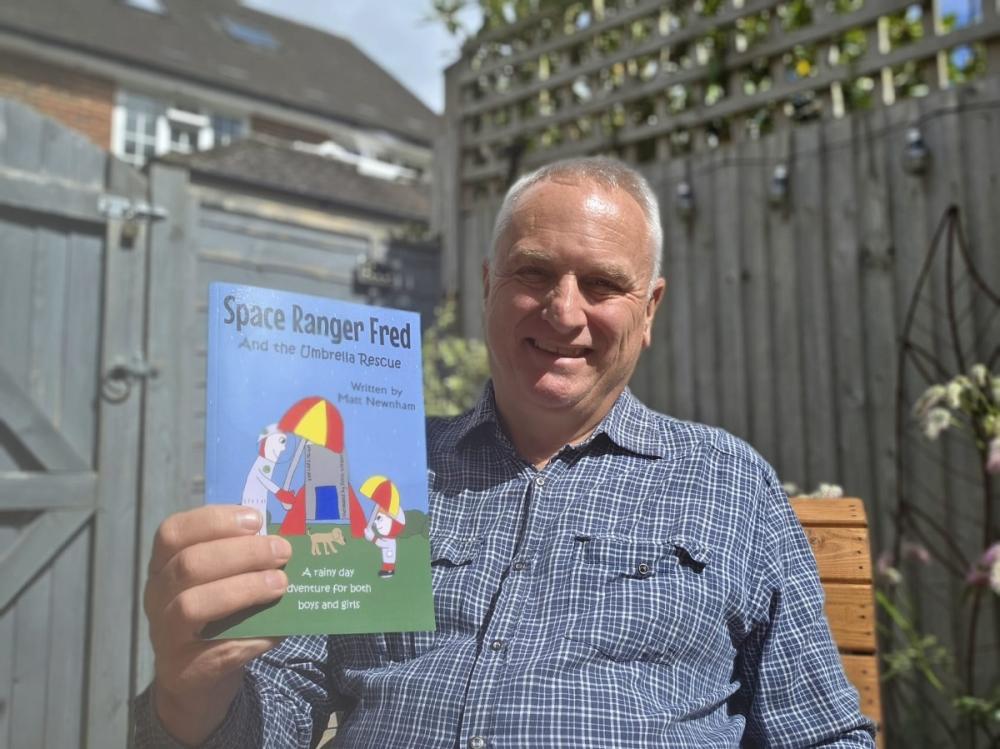search
date/time
 | Yorkshire Times Weekend Edition |
12:00 AM 30th August 2025
family
Space Adventures, Science, And Storytelling: Why Creativity And STEM Belong Together
By Matt Newnham

The world today moves far faster than it did when I was at school in the 1980s. To thrive now, children need more than just memorised facts. They need curiosity, imagination, and the ability to solve problems. That’s why combining creativity with STEM (Science, Technology, Engineering, and Maths) is so vital. This blend helps children think critically, while showing them that science and technology are exciting rather than intimidating.
As a children’s author and creator of Space Ranger Fred, I’ve seen how stories can light up an interest in STEM. On the surface, Fred’s intergalactic adventures with his eccentric mentor, Space Ranger Zando Centauri, are full of humour and silliness. But behind the laughs is a serious purpose: encouraging children to explore logic, critical thinking, and science through imagination.
Why Creativity Matters in STEM
STEM subjects are often viewed as strict and factual. Maths has right or wrong answers. Science requires memorising terms and formulas. Yet, the greatest breakthroughs, from rockets to AI, began with a question: “What if?”
Ask better questions rather than passively accept information.
Experiment and understand that failure is part of learning.
Visualise ideas and invent solutions that don't yet exist.
Creativity isn't an optional extra. It is a crucial partner to science and engineering.
Space Ranger Fred: STEM in Disguise
In Space Ranger Fred and the Shoelace Adventure, the emperor’s dilemma sounds silly: he can’t tie his shoelaces. But the stakes are high. Without laced shoes, he can’t attend an important party. On his planet, shoelaces are new and baffling. Fred helps, and through this simple problem, children experience a journey involving logic, patience, and design. A basic task, presented in a fun sci-fi setting, becomes a way to explore sequences and mechanics.
Later adventures explore telling time, malfunctioning rockets, odd puzzles, and galactic baking. Children laugh at the chaos, but they’re also absorbing lessons in trial and error, testing, and cause and effect. It’s engineering in disguise, hidden inside fun and adventure.
Storytelling Builds Critical Thinking
Stories help children make sense of the world. For them, stories are more than entertainment. They are safe spaces to explore big ideas.
Through a story, children can ask, “What if Fred pressed that button?” They can predict outcomes, imagine different scenarios, and test ideas without real-world consequences. This mirrors the scientific method: making connections, hypothesising, and evaluating results.
Storytelling also makes abstract concepts tangible. A maths equation might seem boring, but if it’s the key to keeping Fred’s spaceship from crashing, suddenly it has meaning.
Inspiring the Next Generation
Very few scientists will say they were inspired by a textbook. Let’s be honest, textbooks are rarely thrilling. Instead, people remember moments, films, stories, or experiences that sparked their curiosity.
That’s what storytelling does. It plants seeds. When children see characters like Fred approach problems with curiosity and courage, they feel inspired to do the same. Science becomes an adventure. It becomes theirs.
In a world facing real challenges such as climate change, energy shortages, and fast-moving technology, our children must see STEM as something they can understand, enjoy, and even lead.
From Books to Screens and Beyond
What excites me most about Space Ranger Fred is how the universe is expanding. I’ve always seen Fred as more than a book character. With a global team, we’re bringing Fred’s world to life through animation, video games, and a digital STEM learning platform. Each format offers a unique way for children to explore science and storytelling.
Books still matter. They help develop language and imagination. But screens, games, and online platforms meet children where they are and keep them engaged. As they grow, these different mediums allow for deeper exploration and understanding of STEM.
By matching content to their development—reading in early years, games in middle childhood, and online learning later—we support children’s natural learning journey and help them connect imagination with understanding.
The Bigger Picture
When I first started writing Fred’s adventures, I never imagined they would grow into something global. Yet educators and scientists tell me again and again that creativity fuels curiosity, and curiosity fuels discovery.
One study found that schools blending storytelling with STEM saw a 30 percent rise in student participation. That’s a significant shift, showing how powerful this connection can be.
By laughing at Zando’s wacky behaviour, the emperor’s confusion, or Fred’s inventive problem-solving, children learn that every problem has more than one solution. They also learn that before any clever technology is invented, there is always a process behind it—a manual, creative one that must be understood first.
Conclusion
The scientists and engineers of tomorrow need imagination just as much as technical skill. When we use storytelling to deliver STEM, we do more than teach. We inspire.
Fred might be a fictional character, but the thinking behind his adventures is very real. Through his stories, we can show children that science is not just something to learn. It is something to live, to love, and to explore.

Matt Newnham